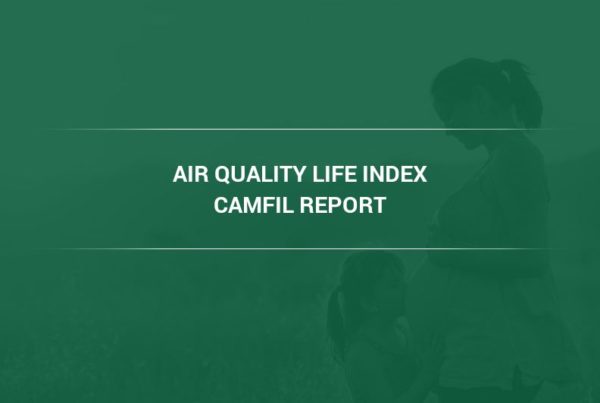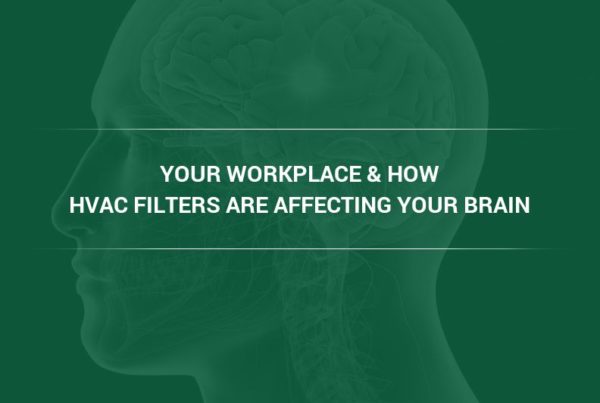Base PM schedule on equipment needs, not air filter changes.
Ask drivers how often they should change the oil in their cars and you’ll likely hear an answer that’s been repeated for generations: ‘three months or every 3,000 miles, whichever comes first.’ The performance of older automobile engines and the low quality of motor oil demanded a short interval be followed to avoid expensive repairs. However, that may no longer be valid as improvements to automotive engines and advancement in oil chemistry has changed the paradigm; saving many companies significant internal or external labor hours and cost.
Today, some synthetic oils guarantee twenty-thousand miles between changes, which, for the average American who drives 14,263 miles annually, means a once-per-year oil change. While car manufacturers are extending maintenance intervals up to 10,000 miles, and in some cases longer, that message has not yet reached everyone. Quick in-and-out oil change shops with guilt-inducing windshield stickers are doing their best to ensure the 3,000 mile/three-month oil change remains firmly in place, for obvious reasons.
But oil change intervals are not the only maintenance cycle under challenge due to advanced technology. Recent improvements to HVAC equipment, building automation systems, and air filter technology have progressed to the point where the question should be asked: Is it also time to rethink the industry standard of automatically scheduling quarterly PM service calls on your HVAC equipment?
Let’s look at just a few recent technical innovations on three key components of HVAC systems and how they give you flexibility when determining the optimum interval between PM calls.
What Should Your PM Service Call Include? PM Checklist for HVAC System
In the commercial HVAC industry, “PM” stands for preventive maintenance. Just like getting an oil change for your car helps keep everything running smoothly and prevents engine trouble, a PM service will keep your HVAC system in good condition, preventing costly repairs and the downtime that accompanies them.
While the exact steps that your HVAC maintenance expert should take will depend on the specifics of your HVAC system as well as the time of year, here is a general checklist for what a technician will do during a standard preventative maintenance call:
- Replace filters on heating and/or cooling equipment.
- Clear pans and drain lines.
- Measure airflow to ensure it is adequate.
- Replace any belts and pulleys found to be in poor condition.
- Examine electrical connections.
- Clean evaporator and condenser coils.
- Lubricate moving parts such as gears and bearings.
- Ensure that controls, such as the thermostat, are working correctly.
- Check and adjust fan and blower motor operation.
- Measure refrigerant charge and check for leaks if the charge is low.
In short, a service contractor should be checking every component of your HVAC system to ensure that everything is running properly before any issues arise in its function.
How Often Do You Really Need Preventative Maintenance for Your HVAC System?
- Modern HVAC equipment isn’t as prone to breaking.
Like most mechanical systems, HVAC equipment has benefited from the improved reliability of raw materials in the supply chain. Stress fractures from the vibration of moving parts are less of an issue as the consistency of metals and other materials used for structural supports have become more reliable. Belts, which in the past required regular inspections, now routinely run a minimum of one year between adjustments.
If we look at the heart of an HVAC system, new variable speed compressor technology reduces wear and tear by matching the compressor’s operational speed to the demand load. This also reduces repeated startups from a dead stop which is not only hard on equipment but requires significant energy.
If the compressor is the heart of the system, coils are the veins and arteries. Micro-channel coil technology, borrowed from the automotive industry, utilizes aluminum tubes as opposed to fins. These tubes are much sturdier with higher resistance to corrosion. The manufacturing technique used to produce these coils has fewer critical inherent failure points which further improves reliability.
- Automated monitoring systems allow remote inspection and adjustment.
A maintenance office in today’s world may resemble an air traffic control tower due to the expanded use of building automation systems. It was not all that long ago, the ability to continuously monitor and adjust the performance of your HVAC equipment from a single computer terminal was limited to Fortune 500 companies with deep pockets. That is no longer the case as the widespread use of this technology has brought its benefits within nearly everyone’s budget.
These systems give the user the ability to monitor the current condition of multiple units with the same level of confidence as a visual inspection. As software continuously improves, diagnostic functions and even equipment failure predictions will allow managers to avoid running equipment to failure between pre-scheduled maintenance calls.
- Higher-quality air filters protect HVAC equipment more effectively and for longer.
The air filter is the final piece of the puzzle. More than the other two components, the service life of the pleated air filter has historically been the primary driver when developing a PM schedule. In the past, air filters would need to be replaced every three months. The lack of technical innovation to improve service life by air filter manufacturers coupled with service contractors who built their business models on four changes per year left the industry with their version of the “3000-mile oil change.”
However, according to Camfil USA’s Manager of Marketing and Technical Materials, Mark Davidson; “While today’s pleated air filters may look the same as they used to, the similarity ends there. Today, you can find structurally strong, moisture-resistant pleated filters with higher MERV ratings. It may be a surprise to many, but 12-month service life guarantees are now available”
“Be an active participant when selecting air filters that protect your people and your products. Everyone in the supply chain doesn’t have the same motives so it’s up to users to request test reports or modeling software projections. After purchase and installation, validate those lab reports with actual field testing to confirm performance.”
“Also, ask what guarantees are in place as far as how long the filter is expected to last,” says Davidson., “Take advantage of those filters capable of delivering higher performance combined with longer life because by doing that, PM schedules can now be developed after removing the service life of the air filter from the equation. In other words, create PM schedules based solely upon the needs and performance of HVAC equipment; not because an air filter needs to be changed.”
Based on the advancement in equipment performance, building controls, and air filter technology, should building managers rethink the practice of automatically scheduling quarterly PM service calls? It may be hard to say yes to that question, but remember that improvements in the auto industry successfully challenged something as deep-seated as the 3000-mile oil change, and we are all the better for it. The overall cost to the consumer is down, performance is up, and we are disposing far less waste oil.
In the HVAC world, it seems technological improvements now allow PM schedules to be based primarily on the mechanical needs of the HVAC equipment and not because the air filters need changing. System performance is improved, overall costs are down, and far fewer dirty filters are shipped to landfills.
About Camfil Clean Air Solutions
For more than half a century, Camfil has been helping people breathe cleaner air. As a leading manufacturer of premium clean air solutions, we provide commercial and industrial systems for air filtration and air pollution control that improve worker and equipment productivity, minimize energy use, and benefit human health and the environment. We firmly believe that the best solutions for our customers are the best solutions for our planet, too. That’s why every step of the way – from design to delivery and across the product life cycle – we consider the impact of what we do on people and on the world around us. Through a fresh approach to problem-solving, innovative design, precise process control, and a strong customer focus we aim to conserve more, use less and find better ways – so we can all breathe easier.
The Camfil Group is headquartered in Stockholm, Sweden, and has 31 manufacturing sites, six R&D centers, local sales offices in 35+ countries, and about 5,200 employees and growing. We proudly serve and support customers in a wide variety of industries and in communities across the world. To discover how Camfil USA can help you to protect people, processes and the environment, visit us at www.camfil.us/
##
Media Contact:
Lynne Laake
Camfil USA Air Filters
T: 888.599.6620
E: Lynne.Laake@camfil.com
F: Friend Camfil USA on Facebook
T: Follow Camfil USA on Twitter
Y: Watch Camfil Videos on YouTube
L: Follow our LinkedIn Page
Sources:
https://www.fhwa.dot.gov/policyinformation/statistics/2019/vm202.cfm
https://cleanair.camfil.us/2017/09/21/extend-time-pm-service-calls/



